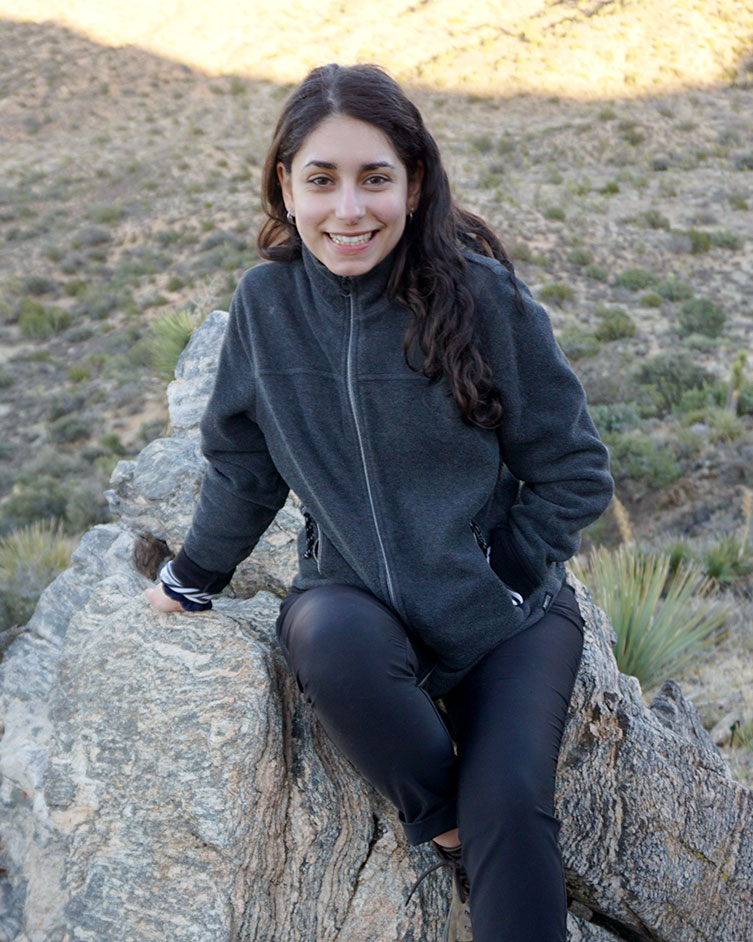Pascali Works as Visiting Researcher and Science Communicator Making Science Accessible to the Public
The Geological Society of America in collaboration with the National Park Service and AmeriCorps selected University of Houston geology graduate Amanda Pascali (’20) for a Geoscientists in the Parks position at Joshua Tree National Park. Selected for Spring 2021, Pascali will spend three months in the California desert as part of this opportunity. She was chosen from a field of hundreds of applicants.

“I heard about Geoscientists in the Parks (GIP) from Dr. Paul Mann about three years ago when I first declared as a geology major and was working in his research group,” says Pascali. “He told me about one of his students who had applied for the program and was to complete a term over the summer.”
Since Pascali usually took classes during the summer, fall, and spring, she never got a chance to serve a term with GIP while in school.
“During the summer between my junior and senior year, I completed an international field camp course in Spitsbergen, Svalbard, so there was no time that summer either,” Pascali said. “It wasn't until my last semester that I was finally able to apply for several GIP opportunities across the country. Later on, during the summer of 2020, Joshua Tree National Park called me and told me they wanted me here in the Spring of 2021.”
During quarantine, Pascali took and passed the ASBOG exam, becoming a board-certified Geologist in Training before her departure to Joshua Tree. In the park, she works as a research assistant and science communicator, translating complex scientific topics to be understood by non-science audiences.
In addition to assisting visiting professors and scientists with data collection and interpretation for research on the igneous and metamorphic rock formations in the field, she is developing educational materials for teaching geology to non-science audiences, especially children.
“I have been interested in science communication since I was little. I was a big Carl Sagan fan,” Pascali said. “During my undergrad at UH, I took every opportunity I could to do science outreach at local ‘Title I’ elementary schools for children from low-income families. My interest is in encouraging young girls and under-represented groups to pursue science.”
In the fall of 2020, as the publicity director of the AAPG Women's Network, Pascali published an article in AAPG Explorer titled Representation and Retention Matters. The article discusses studies done by Microsoft and others that show that children from under-represented groups with role models in STEM are more likely to pursue pro-science career aspirations.
“I am here to inspire the next generation of geoscientists,” says Pascali. “My future career goals are heavily focused on humanitarian work and increasing accessibility to science education for people around the world. Science can truly be revolutionary if it is made accessible to the public.”
Pascali thanks her UH Department of Earth & Atmospheric Sciences mentors Dr. Paul Mann, Dr. Julia Wellner, and Dr. Peter Copeland for encouraging her to seek out such opportunities and grow as both a geoscientist and a communicator.